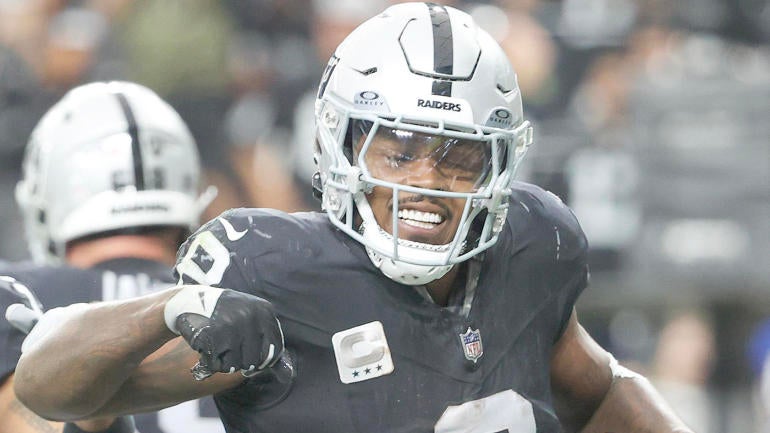
Few positions have drawn as much scrutiny in recent years as running back, with NFL teams seemingly refusing to make premium investments in the spot both via free agency and the draft. Then came the 2024 offseason, when big names like Saquon Barkley and Josh Jacobs wasted no time landing splashy deals to start free agency.
What changed? And were this year's running back deals actually more lucrative than those of prior offseasons?
Right off the bat, we can answer the second part: Yes, this year's investments were richer. If we exclude the three backs who played 2023 under the franchise tag (worth between $10 million and $11.8 million), it's plain as day that this year's market was both deeper and pricier at an otherwise increasingly devalued position:
Note: "AAV" denotes average annual value.
| Year | Top Deal | Top AAV | Above $5M AAV |
|---|---|---|---|
2024 | $48M (Josh Jacobs) | $12.6M (Saquon Barkley) | 7 |
2023 | $25M (Miles Sanders) | $7M (Dalvin Cook) | 3 |
2022 | $21M (Leonard Fournette) | $7M (Fournette) | 4 |
2021 | $11M (Kenyan Drake) | $5.5M (Drake) | 2 |
| 2020 | $16M (Melvin Gordon) | $8M (Gordon) | 2 |
Even if we include last year's trio of tagged backs -- Barkley, Jacobs and Tony Pollard -- the 2024 market has blown recent years out of the water, with Jacobs' nearly $50 million pact with the Green Bay Packers easily becoming the largest free-agent running back deal since Le'Veon Bell got $52.5 million from the New York Jets in 2019. While the $5 million per-year mark is an arbitrary measuring stick here, it's also notable that more than a half-dozen backs reached that total in 2024, as opposed to just two in 2020-2021.
Clearly this year's backs got paid more handsomely. So let's now return to the original follow-up: What changed? For one, there's the salary cap. It's not unusual for the NFL cap to rise each year. But this year's rise was immense. If we exclude the jump from 2021-2022, a 14% increase fueled almost exclusively by the NFL restoring normal operations after the COVID-19 pandemic, this year's increase in league-wide cap space (13.6%) was the largest in almost 20 years, dating back to a seismic 19.3% jump between 2005 and 2006.
In other words, all 32 teams had more money to spend than usual in 2024, and a chunk of them allocated some of their excess cash to running back upgrades. Other positions saw quieter but equally notable spikes; consider wide receiver, where a so-so Darnell Mooney netted $13 million per year, or tight end, where career reserve Colby Parkinson got $22.5 million over three seasons.
Unlike those spots, however, running back was also chock-full of proven talent. The onslaught of short-term, prove-it deals for Pro Bowl-caliber stars like Barkley and Jacobs in 2023 ended up overflowing this year's crop of ball carriers. Initially, the supply appeared to outweigh the demand, thus weakening the market further. But with so many teams losing their own backs to the open market, all it took was a few dominos falling -- Jacobs to the Packers, Barkley to the Philadelphia Eagles -- for other clubs to make their own dash at accomplished help.
Are big running back deals here to stay? That seems like less of a sure thing. It's very possible, if not probable, that teams like the Eagles and Packers will be eyeing ways out of pricey commitments to injury-prone weapons like Barkley and Jacobs, respectively, before those players' deals expire. At the end of the day, running back still registers as one of the most replaceable positions, considering how age and workload tend to affect availability and efficiency. But guys like Barkley and Jacobs, when running full speed, can also still be difference-makers in a league that just saw Christian McCaffrey help propel the San Francisco 49ers to a Super Bowl appearance.
In other words, if -- and it's a big "if," but it exists -- a back can prove to be a multipurpose playmaker, it's clear there's still room for them to earn a splashy contract in today's NFL.






















